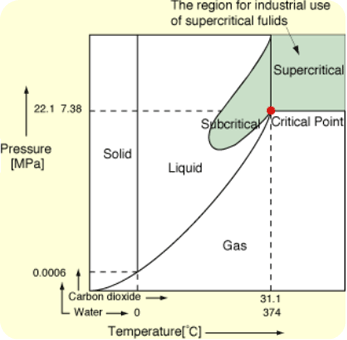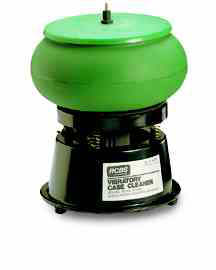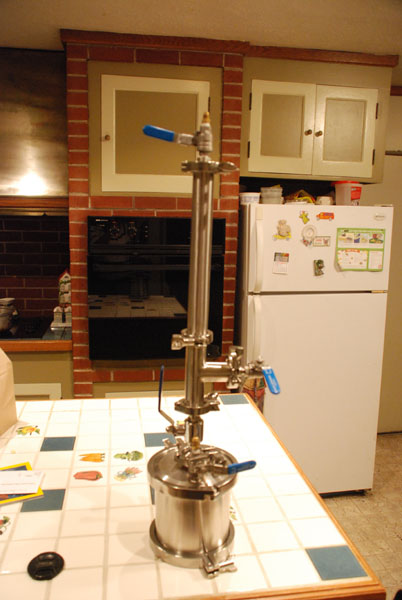Rotary evaporators are one of the ways that fractional components can be distilled out of a solvent mixture, while minimizing heat input. In is simplest form, rotary evaporation is a boiling flask of solution is rotated on its side in a hot bath, while under vacuum, with the vapors being condensed and collected using a chilled heat exchanger. The rotation coats the inside of the boiling flask with a thin film, greatly enhancing film surface area and evaporation rates. Using vacuum instead of heat also allows fractionally distilling fragile substances sensitive to heat, such as carboxylic acids. By controlling the heat and vacuum level, individual fractions may be distilled off and collected at their different boiling points. There is more than one company manufacturing lab size rotary evaporators, and the cheapest is not inexpensive, sooo we'uns decided to attempt a comparison of available offerings, to share with ya'll. Not just what is available, and what does it cost, but what is the utility at the margin, aka bang for the buck, because they also range in price. One out of three success from our first round of importuning central suppliers for the loan of a test unit for impartial-pari-passu (IPP) (even, same/same, side by side) comparison with their competition, to share with our readership. Hee, hee, hee, snicker, snark, snort, I'm pleased to report that Heidolph is proud and confident enough of their Hei-VAP Precision ML G3, to supply it and a chiller for our trials and sooooo, we'uns have been having our way with her at the Pharm. She is a gaugus piece of precision equipment from zee fatherland, who gets extra points for being purdy to gaze longingly upon, but more importantly, she has been reliable and a joy to operate. A admirable quality that lingers in mah heart, after the honeymoon is over and the joy of her good looks wanes!! More fractional distillation experiments underway, but check out Jules report on ethanol removal using the Heidolph Hei-VAP Precision ML G3 at: /evaluation-of-heidolph-instruments-hei-vap-precision-ml-g3/ Thank you Jules from Specialized Formulation's for conducting the tests, as well as Rick from Botanical Analytics for lab space, and support. Thank you Heidolph for sharing the ML G3's charms with us'ns and readership! We admire manufacturers who are confident enough in their equipment to belly up to the bar for unbiased IPP comparison We also still have offers out to other manufacturers, and if any more decide to join us at the bar to strut their stuff, we will share that as well. Lu lu lu lu lu lu lu lu lu lu lu, let the fun begin!!
Sign in to set favorite






I have discovered a method that fractionalizes dispensary extract holding temperatures at or below 100 C, and uses only water as a the media for separation. I only operate on a hobby level, but the technique requires no special equipment. Currently as far as I can see the method will only work on extract that has not yet been decarboxylated as it relies of the fact that extract in raw form will sink in H2O, but extract that is in the process of decarboxylating becomes bouyant in water during the time period that it is undergoing decarboxylation. The setup it very simple really, and it wiil put to bed the idea that components of the extract are not water soluable. I am not a lab so my testing is visual and personal usage of product, but with no doubt at all there are components that can be separated easily if the correct setup is employed. Zero solvent beyond H2O is indeed possible and the simplistic nature of the setup makes it easy to do by anyone capable of safely handling boiling water can handle easily. Since I have only used the process on less than 1/4 ounce of extract at a time I have no idea if it can be scaled up, but the advantage is that during separation like this there is nothing required except a stove top, minimal glassware, and no high vacuum or anything other than gentle heat and water at ambient temps. And time. The disadvantage of my process is that it depends upon decarboxylation to occur during the heating process to substantially work, but it will break the extract down into the major components for either immediate usage or further processing. I use it to remove waxes and irritants and the process is hands down the best method I have used to produce pristine extracts from dispensary grade. The process will fully decarboxylate the extract but will do so without the presence of oxygen to the greatest degree a hobbyist can achieve. Water by itself with some gentle heating and the right glass setup (one test tube, one boiling pan, glass stir rod, stands, heating element) does indeed fractionalize dispensary extract. I vaped some this afternoon. Smooth as silk inhaling. Peace from Oregon.
https://vimeo.com/166726729
This looks great…but i am a commercial grower in wa state. Do they have this model in a larger size? To be able to process 5 gallons of solvent at a time. Prob not huh. Looks pretty cool for the home master batcher though. My ; http://semalamsuntuk.com
Good my web: http://tipskesehatan.website
This looks great...but i am a commercial grower in wa state. Do they have this model in a larger size? To be able to process 5 gallons of solvent at a time. Prob not huh. Looks pretty cool for the home master batcher though.
You may want to look into a stainless whiskey still.
Hee, hee, hee, yup, we've built our own and burned out at one Megahome alcohol stills, see: http://skunkpharmresearch.com/alcohol-reclaim-still/ http://www.steamdistiller.com/megahome-still-for-alcohol-essential-oil-making/ Effective at removing a large amount of alcohol and never raising the solution above about 173F, but a rotary evaporator under vacuum is boiling at a much lower temperature, despite the temperature of the bath. You can't get a liquid hotter than its boiling point, which is when the internal vapor pressure exceeds atmospheric pressure and bubbles are formed. Internal vapor pressure exceeds external atmospheric pressure at a lower temperature, if the atmospheric pressure is lowered using vacuum.
Good question? This unit is available with a 5 liter flask, but not five gallons. I'll ask Heidolph's accounts manager for SPR that question, and see if he is available for direct responses. In the interim, it looks like Heidolph North Americas Toll free number is 866-650-9604 and I have no doubt someone there can answer questions and take Christmas gifts-to-self orders for anything they have available. PS: Here is a link to their large scale rotary evaporators http://www.heidolphna.com/products/large-scale-evaporators/tabnavi/hei-vap-industrial-large-scale-rotary-evaporators/